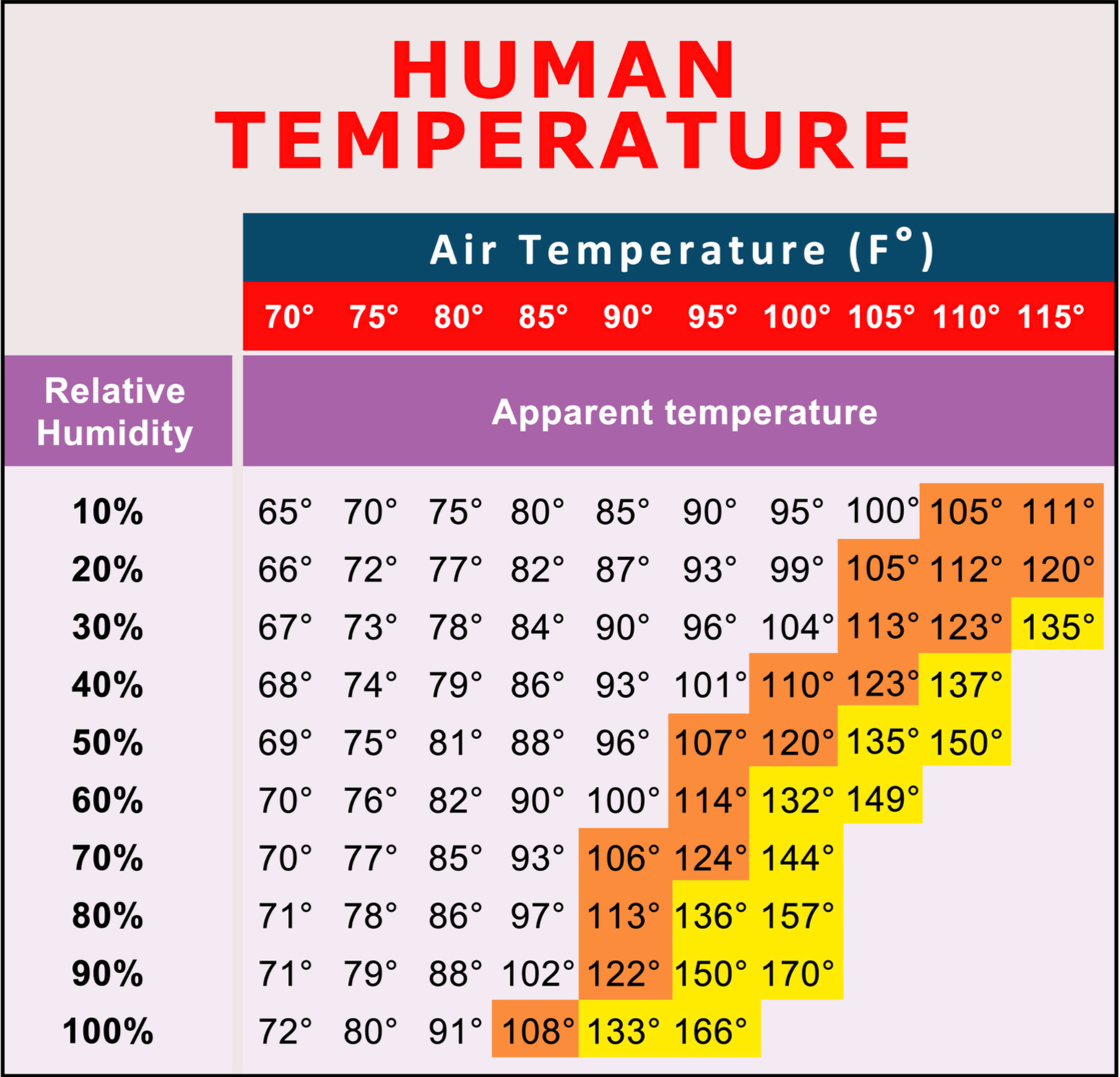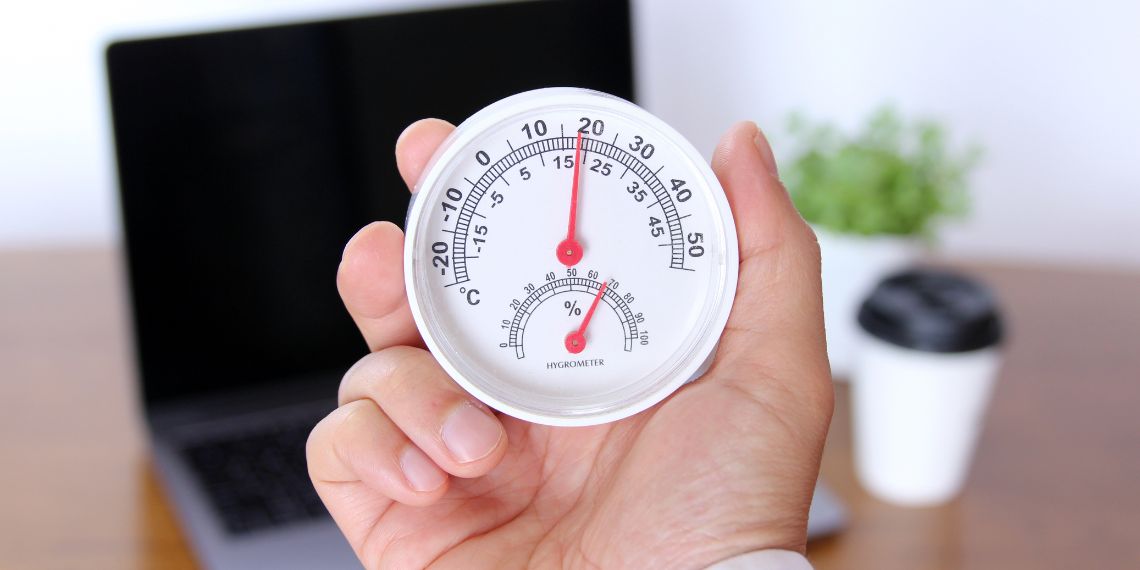The average American spends 93% of their life indoors, while the average Brit spends 92% of their lifetime indoors. Therefore, ensuring that our indoor environment is an optimal and comfortable living space should be a top goal on everyone’s list.
Humidity is one weather metric that affects our indoor experience and overall life quality, yet it is underestimated by many. Humidity is a strong indicator of how comfortable or uncomfortable our homes feel, and it also determines our overall health to some extent. Therefore ensuring your home has an optimal humidity level is non-negotiable.
Well, in this post, we will tell you all you need to know about humidity and provide tips that will help you optimize your indoor space for a comfy home.
Table of Contents
What Is Humidity?
Humidity is a term used to refer to the amount of water vapor in the atmosphere or the air.
So, where does this water vapor come from?
Well, water covers 71 percent of the earth’s surface, and when temperatures rise to the surface of these water bodies tend to heat up and vaporize into the air, which is where most (90%) of the water vapor in the atmosphere comes from. Also, the remaining 10 percent of water vapor is from transpiration from plants and animals.
Factors Affecting Humidity:
There is only one main factor that affects humidity, which is temperature. And as stated earlier, when temperatures are high, more water gets evaporated into the atmosphere, and when temperatures are low, less water gets evaporated into the atmosphere.
So, how does this happen?
What happens is that when temperatures rise, the water molecules absorb the thermal energy from the heat source (usually the sun), and this tends to break the force/bond that holds water molecules together. When these bonds are broken, the water molecules are converted from their liquid state into a gaseous state as water vapor. This water vapor then rises into the atmosphere and causes humidity.
Relative Humidity and Indoor Humidity Levels:
Relative humidity (RH) is one of the two means–and the more popular means—humidity is measured. You’ve probably heard it in the news report or seen it on your weather device, and this got you wondering what it means.
Well, in this section, we will explain what it means to help you understand how it affects your indoor comfort.
What is Relative Humidity?
Relative humidity tells us the amount of water vapor in the atmosphere of a particular geographic location as compared to the maximum amount of water vapor that the atmosphere can hold, and it is often measured in percentages. The relative humidity of a place will strongly depend on the temperature at the moment. This is because as temperatures rise, the air expands, hence it can hold more water, and as temperatures drop, the air contracts, hence it can hold less water. Therefore, the higher the temperature the more water the atmosphere can hold, and vice versa.
So, if the maximum amount of water vapor the air can hold at 50 degrees Fahrenheit is 500 grams of water vapor/kilogram of air, then the maximum amount of water that same air can hold at 20 degrees Fahrenheit will be far less.
This means a 50% relative humidity for a specific area can mean different humidity levels depending on the temperature. For example, if the maximum amount of water vapor the atmosphere can hold at 50 degrees i –let’s say: 60g/kg, and for that same air, if the maximum amount of water vapor at 25 degrees Fahrenheit is– say can be 37g/kg then a 50% relative humidity for those temperatures will mean different things. At 50 degrees, a 50% RH will be 30g/kg, while at 25 degrees, a 50% RH will be 18.5 g/kg. This means a 50% RH at 50 degrees will be more humid and cause you to feel sticky and sweaty than a 50% RH at say 25 degrees.

Best Indoor Humidity Levels:
Understanding RH is important to help you understand what the indoor humidity level is– which is why we discussed it earlier.
That being said, your indoor humidity levels can be measured with a digital hygrometer. And for a comfy home, your hygrometer should read an indoor RH value between 30% to 60%.
In the summer, ensure that the relative humidity stays between 40% to 50%; while, in winter, your indoor RH levels should be between 30% to 40%.
Ideal Indoor Humidity Chart:
Even though there is a range through which your indoor RH levels should be, it is important to adjust your home’s RH level to match the varying outdoor temperature. So, the ideal indoor humidity chart below indicates the RH level your home should be at per the varying outdoor temperature:
| Outdoor Temperature | Optimal Indoor Humidity Level |
|---|---|
| Higher than 50°F | Max. 45% |
| 25°F to 50°F | Max. 40% |
| 0°F to 25°F | 30% – 40% |
| -20°F to 0°F | 20% – 30% |
| Below -20°F | 15% – 20% |
How Does Humidity Affect Your Home?
High and low humidity levels affect us differently, and in this section, we will explore some effects of varying humidity levels indoors.
Effects Of High Humidity on Your Home:

As stated earlier, during the summer, the air is moist. As a result, the home becomes uncomfortable for us to stay in if we do not put proper measures in place. Not only that, but then, it can also cause some damage to our homes, including:
- It triggers mold growth since a moist environment is a perfect area for mold to thrive.
- Growth of bacteria and mites
- Allergens, bacteria, and viruses become rampant and can trigger health problems.
- Uncomfortable space
- Sweaty sleep
Effects of Low Humidity In Your Home:

During the winter, when temperatures are low, the air tends to be dry, as such, it can make your home uncomfortable as well. Low humidity conditions lead to most health issues; some of which include:
- Itchy eyes
- It causes dry skin and exacerbates other skin conditions such as eczema.
- It triggers respiratory issues such as catarrh, cold, nasal congestion, and triggering asthma.
- Dry cracking woods
Since we know how the various humidity level affects our homes.
How To Decrease Humidity
If you notice your home is uncomfortable and the hygrometer reading is more than 60% then here are a few steps you can take to decrease the humidity in your home:
1. Check Your Home
The first step is to ensure that you check the various corners of your home to ensure vital areas are sealed. These include areas like:
- Fixing leaking pipes which can add moisture to your indoor
- Ensuring that you have proper ventilation
- Cleaning openings or air ducts of ventilating equipment?HVAC systems
- Checking for air leaks
- Check your crawlspace
2. Practice Proper Home Management
There are basic practices you could be engaging in which can lead to increased humidity in your home; some of which include:
- Dry laundry indoors
- Cooking indoors without ventilation fans or a mechanism to draw out the smoke and moisture generated from cooking
- Taking long warm showers
- Having plants indoor
You must desist from any of these activities if you notice your humidity levels are high.
3. Purchase A Dehumidifier
A dehumidifier absorbs moisture content from the atmosphere, which in turn lowers the overall humidity levels of your home for a more comfortable stay. Using a humidifier during the summer can be a great way to save money since it eases the workload of an AC. You can either have a portable humidifier in your bedroom, or you can install a whole-house dehumidifier as part of your HVAC system. Most dehumidifiers allow you to set your RH value, and then it automatically draws out water vapor until it achieves the set value.
4. Get an Air Conditioner or A Fan
Air conditioners are a great way to not only decrease the moisture content of your home but also, help decrease the temperature. Alternatively, fans are a cheaper option if you cannot afford an AC unit.
5. Ensure Proper Attic Insulation
Having attic insulation can help decrease humidity since it keeps the home cool.
How To Increase Humidity Levels:
If your hygrometer has a reading of less than 40% then it means your home’s humidity is low. In such a case, apply the following tips to help increase the level of humidity:
1. Get a Humidifier
Conversely to a dehumidifier, a humidifier adds moisture to the air, preventing the air from dying out and making your home conducive. We have a list of the best humidifiers, so do well to check them out. Most humidifiers allow you to set your RH value, and then it automatically dispenses water vapor until it achieves the set value. Some also come with a humidity level detection technology that detects if your indoor RH has changed from your preferred RH level, and then automatically turns on to reach the preset value.
2. Get Plants
Not only do plants add to the aesthetics, but then, plants are a great way to increase the humidity levels of your room.
3. Dry Your Clothes Indoors
Drying your clothes indoors can increase the humidity of your living space. This is because as the clothes dry, the water in them evaporates and lingers in your room.
4.Take Warm Showers and Open Your Bathroom Door
Warm showers are a great way to cool down during the cold winter, but opening the doors of your bathroom while taking a shower will allow the steam from the warm shower to easily evaporate and linger in your room increasing the overall humidity levels.
5. Cook Indoor
When we cook, the moisture content of the food we cook quickly becomes vaporized and when we do not let it out, it stays in our rooms and keeps it humid. Alternatively, you can gently heat water in the stove and let it sit out. Also, after cooking and eating, wash your plates and air dry them.
Humidity FAQs
100% RH means the atmosphere has reached saturation (it’s filled to the brim with water vapor). When this occurs, the water vapor condenses and then falls back as rain.
Absolutely! By opening windows, you improve ventilation which takes warm moist air outside and brings in cool-dry air. However, this will work when your indoor humidity level is lower than the humidity level outside.
Water vapor in air makes air lighter, as a result, if humidity levels are high, the level of oxygen decreases, making breathing difficult.
Both low and high humidity levels can both affect the comfortability of your home and can be detrimental to your health over time. Therefore, we cannot pinpoint which is better, but we do highly recommend that you keep your indoor humidity levels optimal.






